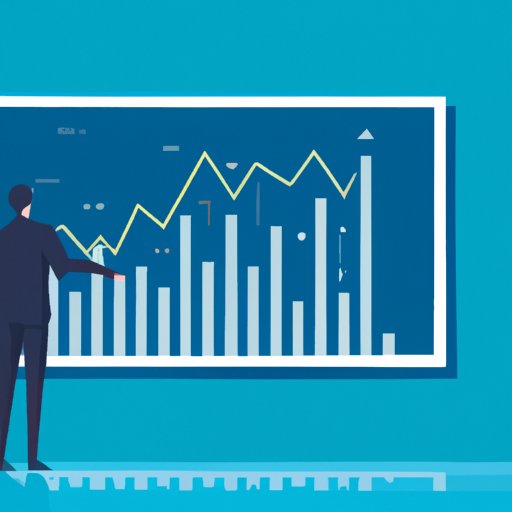
Introduction
Are you curious about how businesses and individuals are able to predict future trends? Trend analysis is a tool used to identify patterns and predict market behavior. In this article, we will provide a comprehensive guide to trend analysis, including what it is, how it works, and how to use it to make informed decisions.
What is Trend Analysis?
Trend analysis is the process of examining data over time to identify patterns. It can be used to identify market behavior, analyze changes in consumer preferences, and forecast future trends. Trend analysis is an important tool for businesses and individuals looking to make informed decisions based on data.
For example, a clothing retailer may use trend analysis to identify which colors, patterns, and styles are popular among consumers. By analyzing sales data over time, the retailer can make predictions about future trends and adjust their inventory accordingly.
How Businesses and Individuals Can Leverage Trend Analysis
Trend analysis offers several benefits for businesses and individuals, including:
- Identifying market opportunities
- Forecasting future trends
- Making data-driven decisions
To incorporate trend analysis into business strategy, start by identifying the key metrics you want to track. For example, a social media marketer may track engagement rates, follower counts, and post frequency to identify which strategies are most effective.
Individuals can also benefit from trend analysis. For example, tracking personal spending habits over time can help identify areas for improvement and make financial planning more effective.
Spotting Trends: A Beginner’s Guide to Analyzing Data
Data analysis is a critical component of trend analysis. To identify patterns, data must be analyzed over time for trends and changes. Beginners can use the following tips to analyze data:
- Identify the timeframe for analysis (e.g. weekly, monthly, quarterly)
- Choose simple and clear visualizations to display data (e.g. line charts, bar graphs)
- Look for patterns and trends over time
Some helpful tools for analyzing data include spreadsheets, data visualization software, and business intelligence tools.
The Importance of Trend Analysis in Marketing
Trend analysis is a critical component of marketing strategy. By analyzing past data, businesses can predict future trends and create campaigns that resonate with their target audience. Examples of companies that have successfully incorporated trend analysis into their marketing strategies include Netflix and Spotify.
Netflix analyzes viewing behavior to recommend new content to users, while Spotify analyzes listening patterns to create personalized playlists. By leveraging data, both companies are able to create a more personalized experience for their users.
Why Trend Analysis is Key to Making Smart Investment Decisions
Investors can also use trend analysis to make informed decisions about where to invest their money. By examining market data over time, investors can identify patterns and make predictions about market behavior.
To use trend analysis for investment decisions, start by examining historical market data. Identify trends and patterns, and use them to predict future market behavior. Keep in mind that trends can change quickly, so it is important to stay up-to-date on market news and events.
The Role of Technology in Trend Analysis
The emergence of new technologies is changing the landscape of trend analysis. Machine learning and AI are enabling businesses to analyze large datasets more quickly and effectively than ever before.
For example, e-commerce giant Amazon uses machine learning to provide personalized product recommendations to customers based on their buying habits. This type of technology is opening up new opportunities for businesses to leverage data and drive growth.
Trend Analysis Across Industries
Trend analysis is used across multiple industries, including finance, healthcare, and retail. Each industry adapts trend analysis to their specific needs, but the process remains the same: analyze data over time to identify patterns and predict future behavior.
For example, healthcare providers may use trend analysis to identify patterns in patient outcomes or to forecast disease outbreaks. Retailers may use trend analysis to identify which products are most popular among consumers and adjust marketing strategies accordingly.
Conclusion
Trend analysis is a powerful tool for businesses and individuals looking to make informed decisions based on data. By analyzing patterns and trends over time, businesses can identify market opportunities and consumers’ preferences. Individuals can also benefit from trend analysis by tracking personal spending habits and making financial planning more effective.
As technology continues to advance, the role of trend analysis is likely to become even more important. Whether you are a marketer, investor, or healthcare provider, trend analysis is a valuable skill that can help you make smart decisions and stay ahead of the curve.




